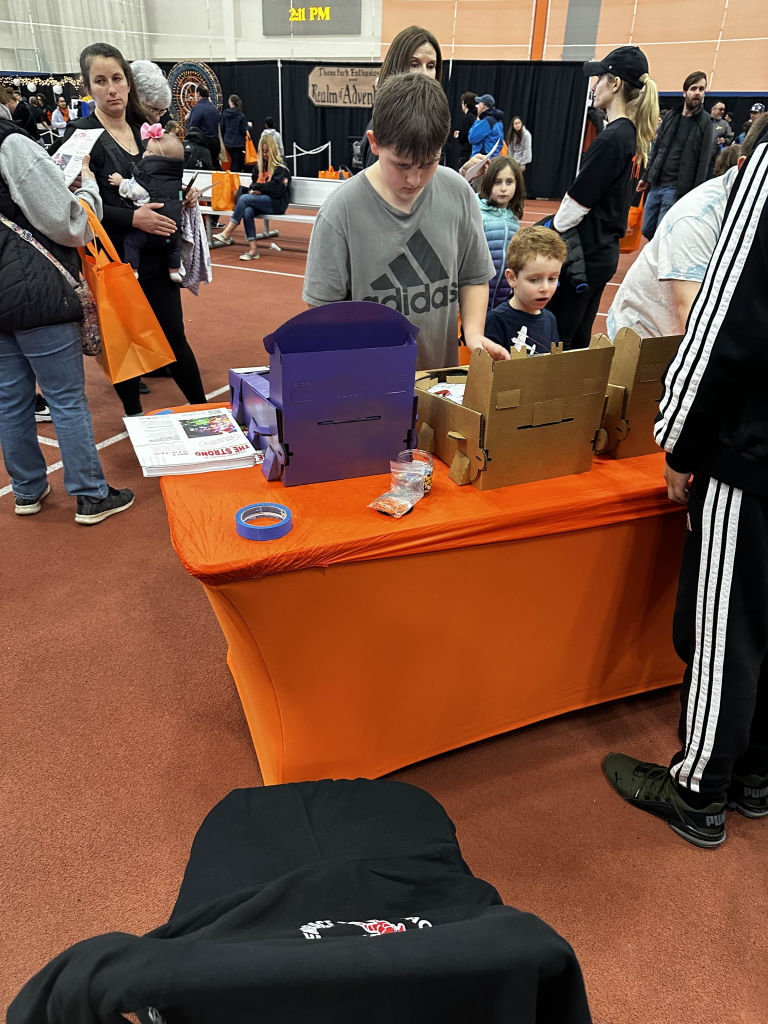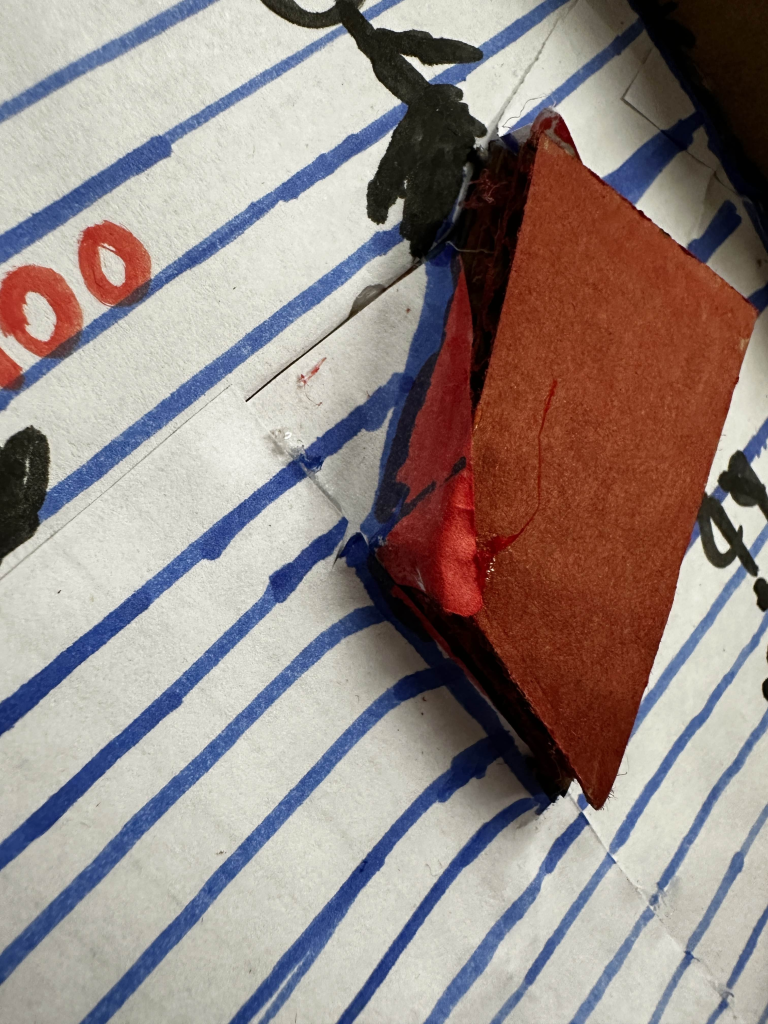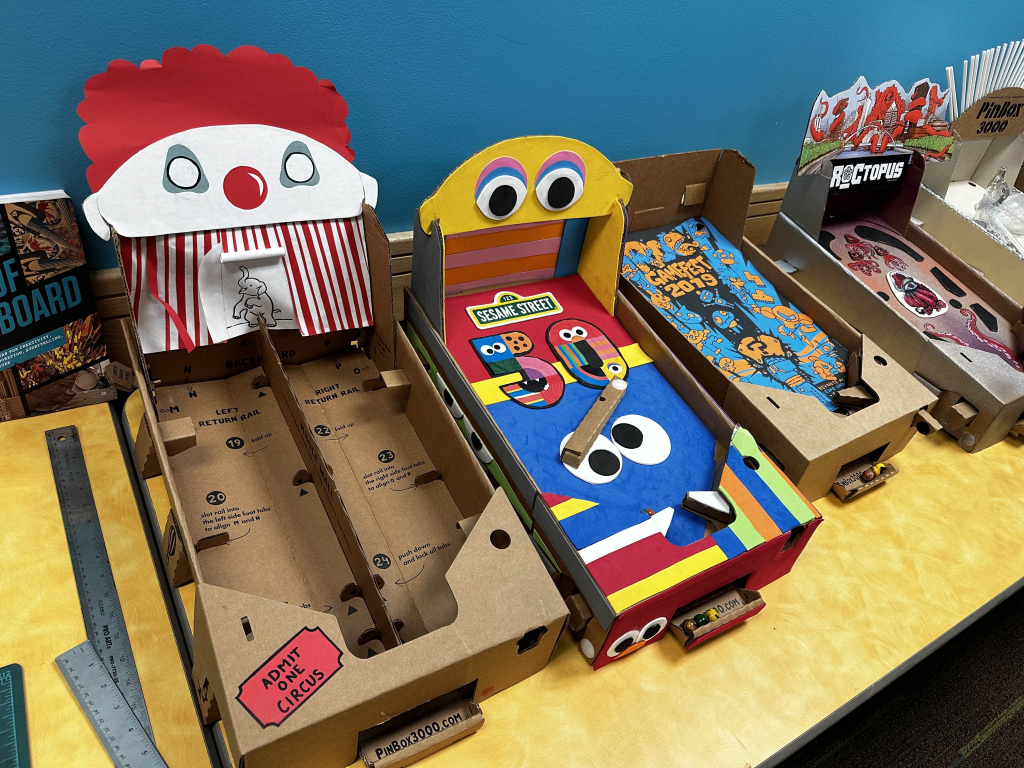My one-hour shift at Imagine RIT was surprisingly lively. Going into it, I expected just a few curious glances here and there, but our pinball table turned out to be extremely popular, especially with kids. It was fun, energetic, and a great trial run for what was to come later at the Strong Museum event.

Kids were pretty aggressive with the machines, but fortunately, nothing broke on mine during my shift. That said, by the next class session, I discovered some minor damage: the doodle monster at the top of my playfield had lost its teeth. I quickly crafted new ones and made the necessary repairs to get it back in shape.
Between the two shifts, I didn’t make many major changes to gameplay, but I did spend some time flattening out parts of the board where the ball tended to get stuck. These subtle tweaks helped improve the overall flow of the machine without altering the core design.

Strong Museum Pinball Day

The Strong Museum shift was a longer 3.5-hour experience. While it was a bit less populated than Imagine RIT because the event was indoors and the weather was rainy, it still had some great highs. There were plenty of families and kids, and seeing how excited they were about building and playing pinball machines was genuinely rewarding.
My shift was mostly spent stationed at my pinbox, ready to explain the design and talk about the class to visitors. Having already done Imagine RIT, I felt much more confident and relaxed. I’m typically a pretty shy person, but this event helped push me out of my comfort zone. I had real conversations with strangers about something I was proud of, something I built.

One of the first challenges of the day was addressing the rain damage my machine suffered during transport. Some components were slightly warped, but with a little help and quick fixes, I managed to repair everything before the event started. I even took the opportunity to make a meaningful upgrade to my design: I added walls around the ramp at the top of the playfield to prevent the ball from getting stuck, which had been a problem during earlier tests.
Perhaps the most inspiring part of the day was getting to see the pinboxes made by Ben and the other workshop leaders. Their machines featured some truly clever ideas such as fidget spinners as bumpers, ball bearings for dynamic motion, and other imaginative mechanics. It really encouraged me to think more creatively about what pinball can be. Seeing their work made me want to go back and push my own machine further.

Takeaways From the Class
Before this class, I wouldn’t have considered myself a pinball fan. I had played it a few times, but I held the same general opinion that a lot of people probably do: that it’s an old arcade novelty. This course completely changed my perspective.
Not only did I learn the rich history of pinball, but I also got a glimpse into a passionate and dedicated community I didn’t even know existed. There are people out there keeping this game alive, not just as a form of nostalgia, but as a living, evolving design space.
And now, I get it. Pinball is far more than just flippers and bumpers. It’s a blend of artistry, engineering, playtesting, and iteration. It’s storytelling through mechanics. Thanks to this class, I feel like I’ve joined a small part of that world. I’m leaving this experience not just as someone who knows how to make a pinball machine, but as someone who actually enjoys doing it.
